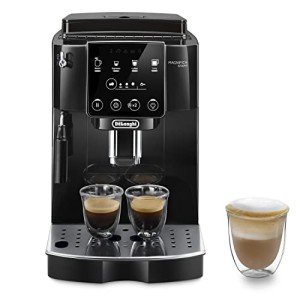The Ultimate Guide to Whole Bean Coffee Machines
In an age where coffee enthusiasts have actually become significantly discerning, the option of a coffee machine has actually ended up being more pivotal than ever. Whole bean coffee machines have become a preferred amongst major coffee drinkers, permitting them to draw out the best tastes from coffee beans. This article explores the complexities of whole bean coffee machines, exploring their functions, benefits, and factors to consider for the devoted coffee fan.
What is a Whole Bean Coffee Machine?
A whole bean coffee machine is developed to grind coffee beans right before developing, guaranteeing optimum freshness and flavor extraction. Unlike standard coffee makers that depend on pre-ground coffee, these machines include a mill, which permits the user to choose the grind size fit to their brewing approach, from espresso to French press.
Advantages of Whole Bean Coffee Machines
- Freshness: The main benefit of using whole beans is that they keep their taste longer than pre-ground coffee. Grinding discover here before developing maintains the aromatic oils that add to the total flavor profile.
- Modification: Many whole bean machines enable users to change grind settings, water temperature level, and brewing time to produce an individualized cup of coffee that meets specific preferences.
- Quality assurance: Whole bean coffee machines empower users to pick top quality beans from different sources, making it simpler to check out unique flavor profiles.
- Versatility: These machines deal with different developing methods, allowing users to craft espresso, drip coffee, or specialty brews with ease.
- Convenience: Integrated mills simplify the coffee-making process, decreasing the requirement for extra devices and decreasing cleanup.
Secret Features to Consider
When picking a whole bean coffee machine, numerous features must be thought about:
Grinder Type:
- Burr vs. Blade: Burr mills offer a more consistent grind, which is vital for consistency in flavor, whereas blade mills tend to produce irregular grinds.
- Brew Method Compatibility: Ensure the machine can accommodate the brewing approach preferred (e.g., espresso, pour-over, French press).
- Capacity: Consider the hopper size for holding coffee beans; bigger capacities indicate less frequent refilling.
- User Interface: Look for machines with instinctive controls, enabling users of all skill levels to run them quickly.
- Upkeep: Machines that are easy to clean and maintain will conserve time and guarantee the durability of the device.
- Product Quality: Stainless steel and state-of-the-art plastic deal sturdiness, while machines with glass components tend to be less resilient.
Popular Whole Bean Coffee Machines
| Brand | Model | Mill Type | Capacity (Cups) | Features | Price Range (₤) |
|---|---|---|---|---|---|
| Breville | BES870XL Barista Express | Burr | 8 | Espresso machine, steam wand | 600 - 700 |
| De'Longhi | EC702 | Pump | 10 | Dual boiler system, stainless steel | 300 - 400 |
| Cuisinart | DCC-3200P1 | Blade | 14 | 24-hour programmable, drip coffee | 50 - 100 |
| Rancilio | Silvia | Burr | 2 | Professional feel, steam power | 700 - 800 |
| Hamilton Beach | 49980A | Blended | 2 | Single-serve, versatile brewing | 30 - 50 |
How to Make one of the most Out of Your Whole Bean Coffee Machine
To attain the best results with a whole bean coffee machine, consider the following suggestions:
- Quality Beans: Always select high-quality, fresh beans that fit your taste.
- Grind Size: Adjust the grind size based on the developing approach. Finer grinds are proper for espresso, while coarser grinds work much better for French press.
- Developing Temperature: Water temperature level need to usually be in between 195 ° F and 205 ° F (90 ° C -96 ° C) for optimum extraction.
- Water Quality: Use filtered water for the very best flavor and to lengthen the machine's life-span.
- Maintenance Schedule: Regularly tidy the mill and machine to avoid residue buildup and make sure consistent performance.
Frequently Asked Questions about Whole Bean Coffee Machines
1. Is a whole bean coffee machine worth the financial investment?
Yes, if you value the freshness and taste of your coffee, purchasing a whole bean coffee machine is beneficial. It enables a richer and more aromatic cup of coffee compared to pre-ground choices.
2. How do I clean my whole bean coffee machine?
Many machines include cleansing instructions. Usually, you'll require to get rid of the grinder, tidy the hopper, and run a cleaning cycle with water. Use brushes particularly created for this function.
3. Can I use pre-ground coffee in a whole bean machine?
Many whole bean coffee machines are particularly designed for whole beans; nevertheless, some may allow you to use pre-ground coffee. Seek advice from the producer's standards.
4. What is the very best grind size for espresso?
A fine grind is typically preferred for espresso. Nevertheless, experimentation can assist discover the ideal grind size that matches your taste choices.
5. How frequently should I change the coffee beans?
For optimal freshness, it is motivated to utilize coffee beans within two weeks of opening after they have actually been roasted. Shop them in an airtight container away from light and wetness.
A whole bean coffee machine can elevate the coffee experience, providing freshness, modification, and remarkable taste. With numerous alternatives readily available, potential buyers can discover a machine that fits their lifestyle and coffee preferences. By thinking about the aforementioned functions, suggestions for optimization, and preserving a constant cleaning routine, users can relish every cup of newly brewed, fragrant coffee for many years to come. Whether for personal use or amusing guests, investing in a whole bean coffee machine is an action towards coffee perfection.

